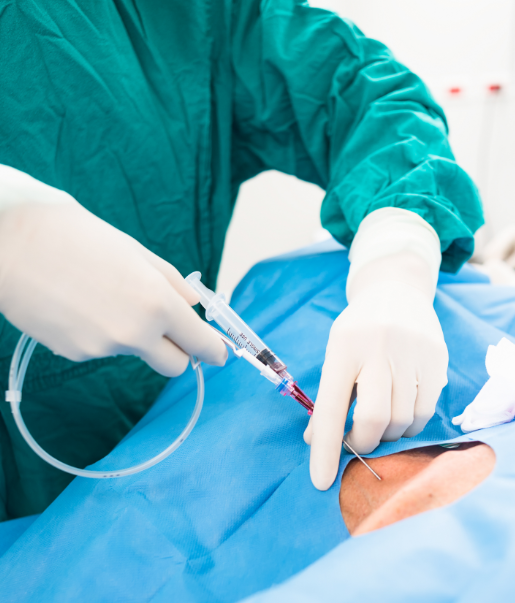Summary
The “Making Central Lines SAFER” initiative is a comprehensive Health System-wide
program to decrease complications, both mechanical and infectious, from resident-performed
central venous access (CVA).
This program was initiated in September 2016 in to address the need for consistent, uniform central venous access technique and training for our GME (Graduate Medical Education) programs. After only one year the Making Central Line SAFER program has had dramatic results, eliminating major procedural complications and drastically reducing central line associated blood stream infections (CLABSI). This program has standardized the techniques, equipment, and training for CVA, saving the health system financial resources and patient-complications.

Comprehensive Training
All departments agreed on a single standardized technique for CVA. The didactic and
hands-on training program that includes a cadaver-based procedural competency evaluation
was based on this standardized technique. The didactic training was developed in conjunction
with the Departments of Surgery (Steven Holsten, MD) and Epidemiology (Julie Hammond,
RN), and consists of 3 parts: appropriate aseptic technique and CVA Bundle, ultrasound
guidance for needle insertion, and best practices for CVA technique. The hands-on
workshop covers each of these areas, reinforcing the mechanical aspects of these tasks.
All residents and fellows who perform CVA are required to attend the comprehensive
training and complete the hands-on workshop stations.
Competency Testing
Following completion of the training, residents participate in a CVA cadaver-based
competency test. Residents perform the CVA procedure including the CVA bundle in
conjunction with a certifying nurse (ED/ICU AUMC nurse). The resident performance
is evaluated using a standardized grading rubric by a faculty physician. The grading
rubric is divided into major tasks (failure of a major task results in failure of
the competency testing) and minor tasks (a resident passes if he/she does not fail
more than 3 minor tasks). Residents must pass the standardized competency evaluation
prior to independent performance of CVA.
Central Line Grading Rubric : Faculty Grading Rubric Nursing Rubric
Needle Guidance for Central Venous Access
Surgical hand scrub/ Putting on a sterile gown
Sterile Closed Gloving Technique
Chloraprep skin prep
Surgical Drapes & Gowns Product Demonstration
Skin Adhesive
3M Tegaderm CHG Dressing
Simulab CentralLineMan Pro Video
